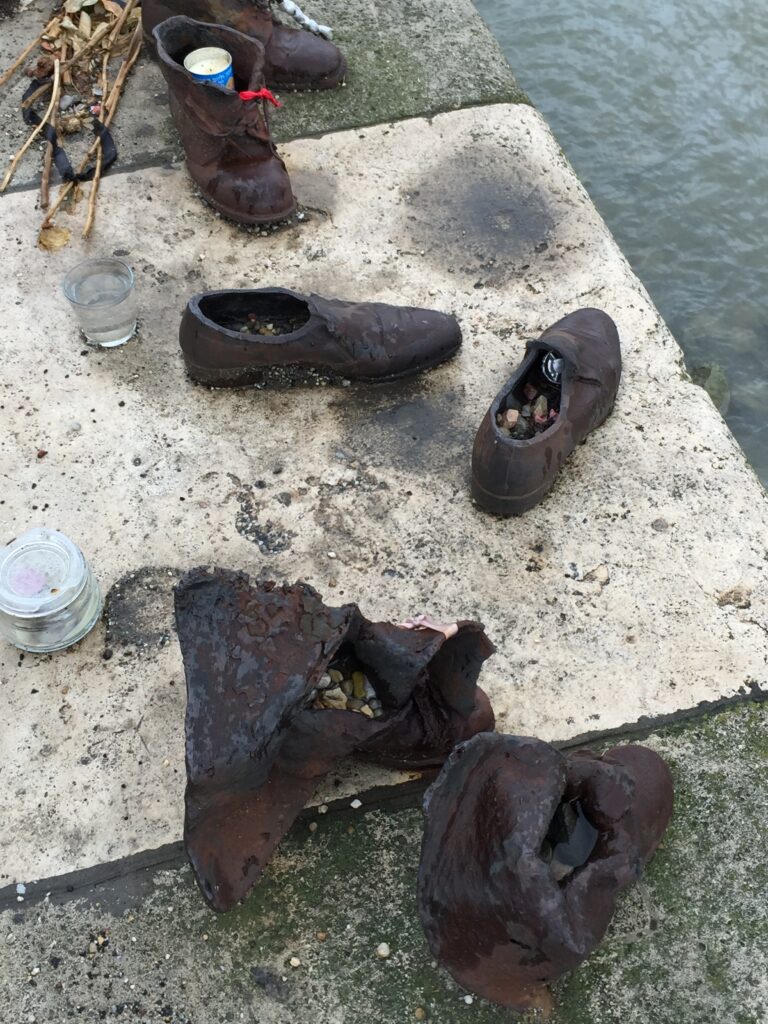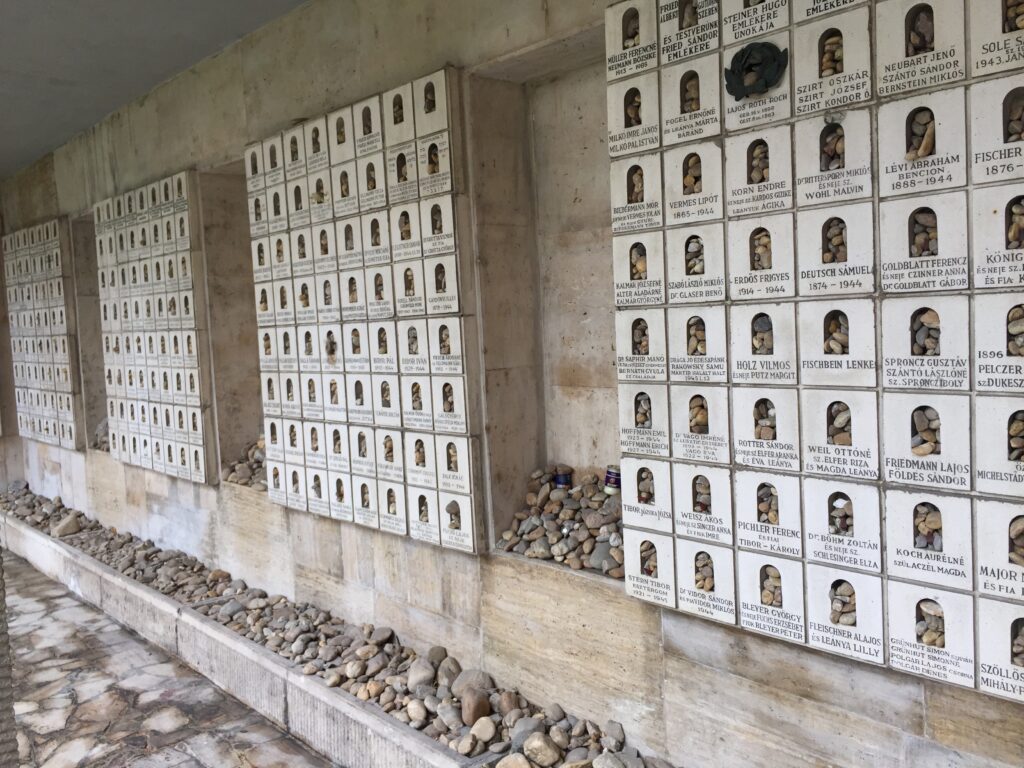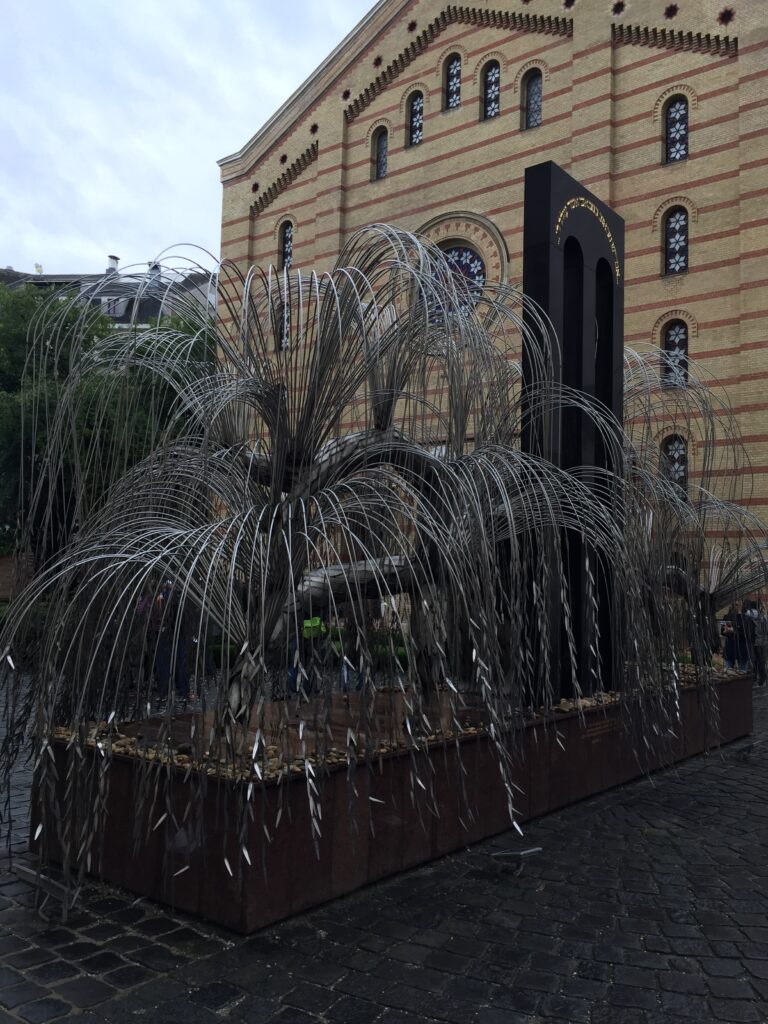Budapest, Hungary a city of stunning architecture and vibrant culture, also bears the weight of a dark and painful history. For those seeking to understand the Holocaust’s impact on Hungary, and to honor the memory of its victims, Budapest offers several deeply moving sites. My journey there was a powerful experience, and I wanted to share some of the key locations for those who wish to embark on a similar path of remembrance.
The Shoes on the Danube Bank:
- This haunting memorial is perhaps the most visually striking. Along the Pest side of the Danube, iron shoes—men’s, women’s, and children’s—stand as a silent testament to the thousands of Jews who were shot and thrown into the river by Arrow Cross militiamen during World War II. The simple, yet profound, imagery of these shoes left behind is incredibly moving. It’s a place for quiet reflection, and to try and imagine the horrors that took place there.
The Budapest Holocaust Memorial Center:
- Located in Páva Street, this center provides a comprehensive and deeply informative experience. It’s crucial for understanding the historical context of the Holocaust in Hungary.
- The center’s exhibitions trace the progression of persecution, from early discriminatory laws to the mass deportations to Auschwitz.
- The memorial wall, inscribed with the names of victims, is a stark reminder of the scale of the tragedy.
- The Páva Street Synagogue, which is part of the center, is a place of reflection, that adds to the experience. It serves as a stark reminder of the communities that were destroyed.
- This center provides valuable historical context, and is a must-see location.
The Dohány Street Synagogue and the Raoul Wallenberg Memorial Park:
- The Dohány Street Synagogue, also known as the Great Synagogue, is a central point of reflection. Its sheer size is impressive, and its history is deeply intertwined with the Holocaust.
- During the war, the synagogue was within the confines of the Budapest Ghetto, and suffered significant damage. Bullet holes can still be seen on its walls, and other damage remains as a stark reminder of the violence it endured.
- The Synagogue itself contains a Jewish museum, that contains many artifacts pertaining to Jewish life in Hungary before and during the holocaust.
- The architecture itself, a blend of Moorish Revival and Romantic styles, is a testament to the once-thriving Jewish community in Budapest.
- Behind the synagogue, the Raoul Wallenberg Memorial Park commemorates the Swedish diplomat who saved thousands of Hungarian Jews. The memorial, including the Emmanuel Tree, serves as a tribute to those who risked their lives to help others.
Tips for Your Visit:
- Allow ample time: These sites are emotionally impactful, and you’ll want to take your time to absorb the information and reflect.
- Be respectful: These are places of remembrance, so maintain a respectful demeanor. Especially inside of the Synagogue.
- Consider a guided tour: A knowledgeable guide can provide valuable context and insights, especially for the Synagogue and the Holocaust Memorial Center. Guided tours of the Synagogue can provide a much deeper understanding of the building, and its history.
Budapest Jewish Heritage Tour and Synagogue Ticket - Research beforehand: Familiarize yourself with the history of the Holocaust in Hungary to enhance your understanding.




